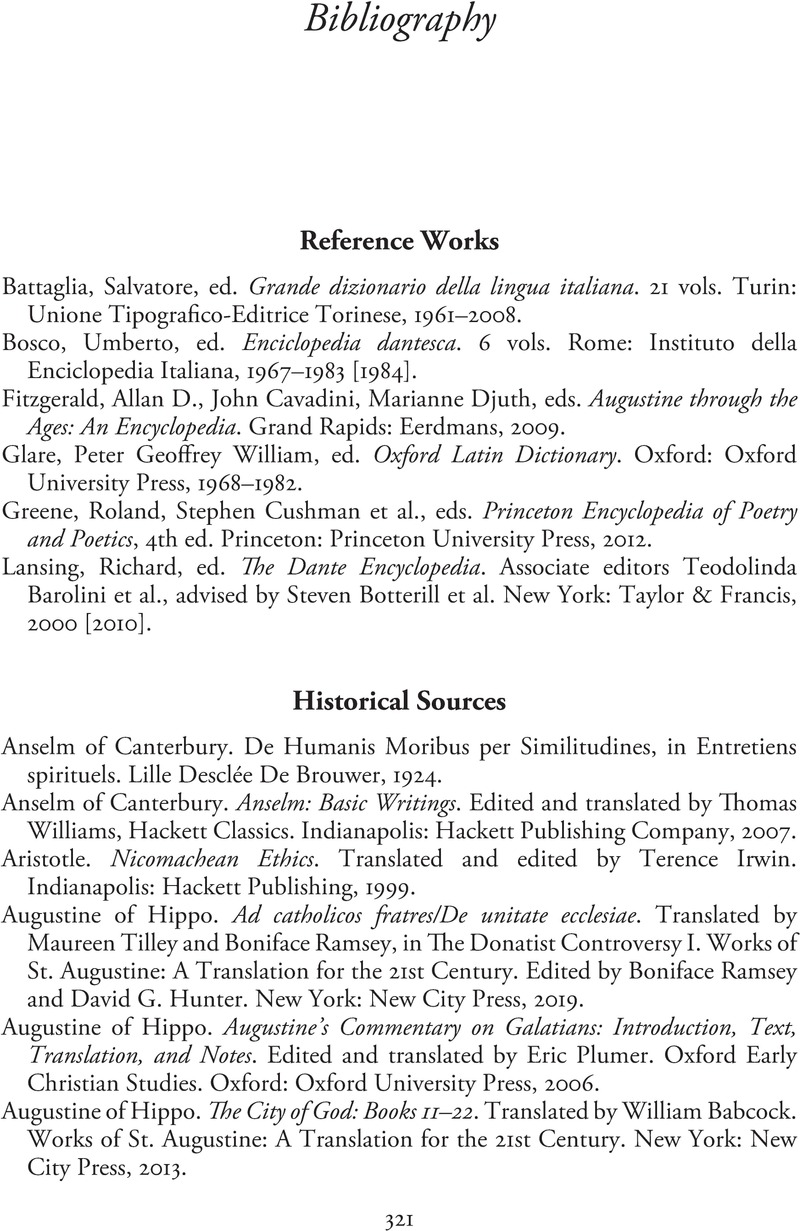Book contents
- Dante and the Practice of Humility
- Dante and the Practice of Humility
- Copyright page
- Contents
- Acknowledgments
- Editions Used, Translations Given, and Commentaries Consulted
- Introduction
- Chapter 1 Superbia as Sin in Inferno
- Chapter 2 Humility as Difficult Devotion (Purg. 1–9)
- Chapter 3 Art as Humble Practice (Purg. 10–12)
- Chapter 4 Humility as Love’s Condition (Purg. 13–33)
- Chapter 5 Humility as Capacity in Paradiso
- Conclusion
- Bibliography
- Index of Scriptural References
- Index
- References
Bibliography
Published online by Cambridge University Press: 29 June 2023
- Dante and the Practice of Humility
- Dante and the Practice of Humility
- Copyright page
- Contents
- Acknowledgments
- Editions Used, Translations Given, and Commentaries Consulted
- Introduction
- Chapter 1 Superbia as Sin in Inferno
- Chapter 2 Humility as Difficult Devotion (Purg. 1–9)
- Chapter 3 Art as Humble Practice (Purg. 10–12)
- Chapter 4 Humility as Love’s Condition (Purg. 13–33)
- Chapter 5 Humility as Capacity in Paradiso
- Conclusion
- Bibliography
- Index of Scriptural References
- Index
- References
Summary

- Type
- Chapter
- Information
- Dante and the Practice of HumilityA Theological Commentary on the Divine Comedy, pp. 321 - 338Publisher: Cambridge University PressPrint publication year: 2023



